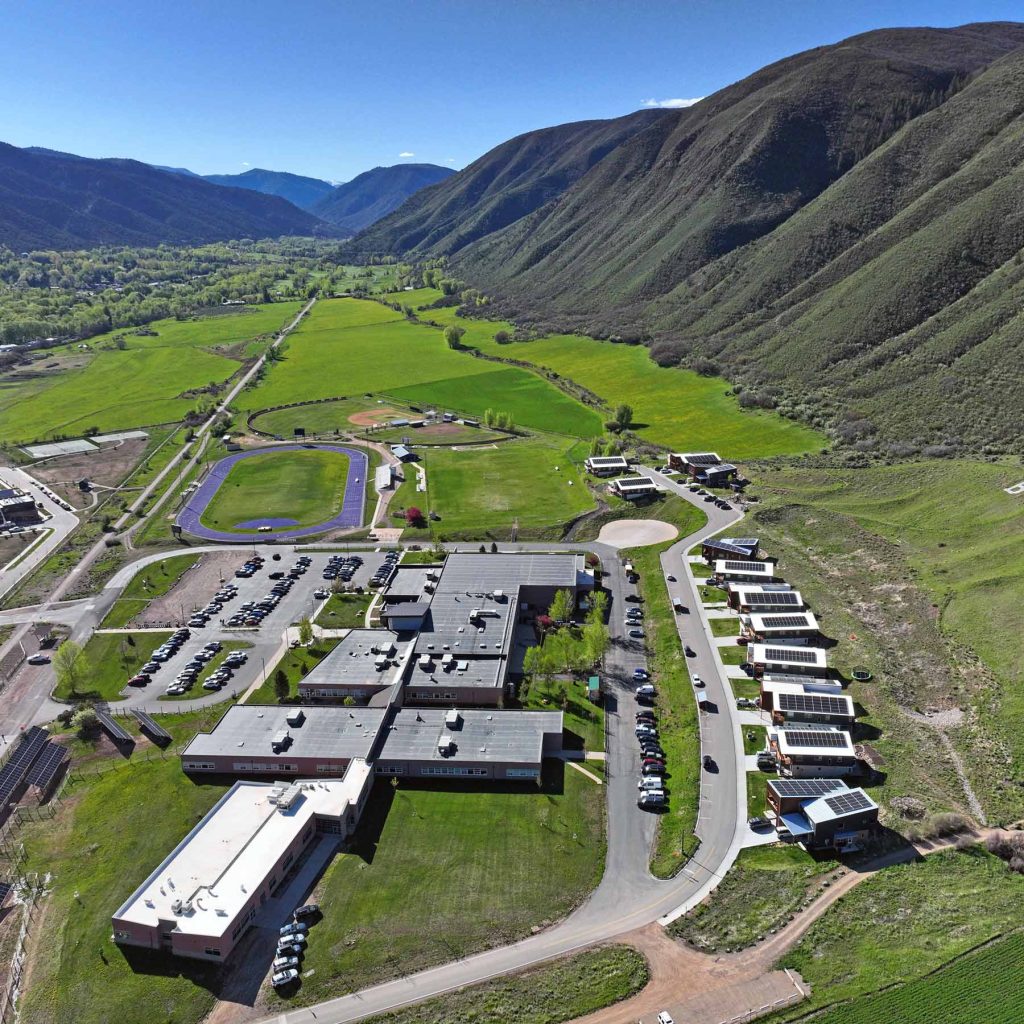Take a look outside your house, and you’ll probably see a street. From your local roads to world-famous landmarks, civil engineering colors all types of structures and buildings in our society. Civil engineering is visible everywhere in our everyday lives, and yet a lot of people aren’t sure what a civil engineering project actually is.
As a team of elite civil engineers based in Colorado, we’re happy to answer your questions about examples of civil engineering projects and offer some of our own.

What Is Civil Engineering?
Civil engineering is the design, construction, and maintenance of infrastructure projects and systems. A civil engineer ensures that structures are safe, efficient, and sustainable throughout the structure’s lifespan. The field uses a combination of the principles of physics, mathematics, and material science.
We’re biased, but we think there are tons of cool civil engineering jobs out there, and encourage you to explore them! From outer space to ski resorts, civil engineering has its place in almost every field.
What Types of Projects Do Civil Engineers Work On?
Civil engineers tackle a broad range of property and site types in their career. Project examples include roads, bridges, buildings, dams, airports, water supply, and sewage systems.
Some civil engineers specialize in specific types of civil engineering, such as environmental engineering, while others prefer to work with full-service civil engineering projects.
Our team at Roaring Fork Engineering provides full-service civil engineering, meaning we work on everything from specialized water management solutions to land surveys and construction administration.
Examples of Civil Engineering Projects
So, what are the most common types of civil engineering projects? We break down ten examples of civil engineering work below.
Bridge Design
Whether it’s a simple road reinforcement over a creek or a massive construction project spanning between the mainland and an island, civil engineers design bridges with a variety of factors in mind. From support structures to weight limits and potential flooding concerns, bridges must be carefully designed to withstand stresses and physical forces of their unique environment. When these factors aren’t considered, bridges can collapse – endangering their users and surrounding environment.
A great example of the importance of civil engineers can be found in the Tacoma Narrows bridge case. In 1940, the Tacoma Narrows bridge in Washington state was a suspension bridge that, a mere four months after its opening, had a catastrophic failure in relatively light winds, snapping its suspension cables. Even prior to its collapse, it was called “Galloping Gertie” for its tendency to roll with the wind, making traffic uneasy.
The Tacoma Narrows bridge boosted research in aerodynamics and aeroelastic fields, leading to studies that informed today’s greatest suspension bridge designs. It hadn’t been modeled with a wind tunnel and aerodynamics weren’t well-studied yet, which is likely why it collapsed so quickly under the strain. In today’s suspension bridge design, the Tacoma Narrows has entirely altered best practices for their build.
Roadway Design
In 2017, 91% of Americans commuted to work using a personal vehicle, according to the Bureau of Transportation. Roads are everywhere, and almost everyone uses them on a daily basis to get where they need to go. From adding stoplights to facilitate protected turns to building new highways, civil engineers are vitally important to help ensure you have a safe, efficient way home.
Railway Design
Civil engineers work to ensure all cargo – human or otherwise – is reliably and safely transported. The goal is to ensure efficient, safe, and reliable rail transport, considering factors like load capacities, track geometry, and environmental effects.
From the inner-city New York City subway system to expansive AMTRAK lines across the country, railways are used to keep our cities and towns supplied along with passenger trains that help get commuters to and from work.
Wastewater Treatment Design
Handling hazardous waste and sewage is a critical component of keeping a community healthy and clean. Civil engineers plan out how wastewater is treated and managed from residential, commercial, and industrial sources. Their plans adhere to regulatory standards that protect public health and the environment.
As an example, see how we improved the Town of Carbondale’s clarifier at their wastewater treatment facility. Our specialized water management engineers worked to hydraulically model what type of water clarifier would serve the town best.
Dams & Channel Design
Water flowing is a powerful force; erosion carved the Grand Canyon, after all. So it makes sense that dam and channel design is vital to ensure that water is transported safely for storage, irrigation, hydroelectric power and more. From hydrological analysis, to structural design, civil engineers ensure water distribution goes seamlessly and safely.
An example of a great civil engineering feat is the Hoover Dam, as tall as a 60-story building, which dams the Colorado river in order to prevent the historical floods that used to devastate southern California and Arizona. Today, it irrigates farms, provides hydropower and supplies water to key cities such as Los Angeles.
Flood Mitigation Plans
Civil engineers aim to reduce the risk (and impact) of flooding through infrastructure improvements, land use planning, and emergency response strategies. Some common strategies involve the construction of levees, floodwalls, and retention basins.
Utility Layout Design
From electricity to internet cable lines, utilities need to be planned out. Civil engineers map out utilities for water supply, sewage, electricity, gas, and telecommunications. From factors like the landscape to weather patterns, utilities must be incorporated thoughtfully into a city’s design.
For example, power lines: they’re commonly built above-ground on poles. Unfortunately, above-ground power lines are susceptible to damage from trees, human activities and harsh weather conditions.
Underground power lines are sometimes thought to be hardier, since they’re useful in areas with constant snow, high winds and lots of trees with falling limbs. However, underground power lines can cost five to ten times more than overhead wires – and they don’t last as long as above-ground lines, they’re prone to flood damage, and as a final strike they even cost more to replace, since they must be dug up for maintenance. In contrast, above-ground lines are quick to locate and repair when issues arise.
So a civil engineer might usually opt for above-ground power lines in order to save on costs and also to avoid lengthy construction caused by excavation across countless miles of landscapes and soil types.
Tunnel Design
When it comes to tunnels, specialized civil engineers will work to complete geological assessments in order to provide a comprehensive plan for a tunnel’s structural design, ventilation, lighting, and safety systems.
Our favorite tunneling project is the Chesapeake Bay Bridge-Tunnel in Virginia, a 17.6 mile tunnel that’s both a spectacular, award-winning engineering marvel and even was once named “one of the seven engineering wonders of the modern world” after its completion in 1964. It connects Virginia with its Eastern Shore, allowing traffic to cross in a mere twenty-five minutes! We think it’s more than earned its shout out here.
Geotechnical Solutions
A major consideration when it comes to civil engineering is the local environment. Mountains, oceans, rivers and other elements can drastically change the needs of a town’s structures. Geotechnical solutions may address issues like soil stability, erosion control, and ground improvement techniques during civil engineering projects.
As a Colorado team of civil engineering that specializes in serving the Western Slope, we’re uniquely positioned to work on mountainous slopes. We serve specialized businesses such as ski resorts and mountain retreats, along with our local towns and community. A great example of geotechnical solutions is our work with the Aspen Skiing Company, where we’ve ensured sustainable erosion control was built into the construction of a new ski slope, grading the slope itself and more.
Land Surveying
As part of the civil engineering umbrella, land surveying is vital to understanding your area. From slope grading to boundary lines, land surveys can inform how, what, and where you can build on a parcel of land. When you’re selling your home or buying a new one, you’ll probably have a boundary survey conducted to tell you exactly where the property lines are.
A common type of land surveying you might not have thought of is subdivision mapping. When a portion of land needs to be divided up into housing lots, civil engineers will be called to conduct a subdivision mapping land survey that complies with local and state regulations, facilitating a smooth approval process for the property manager to quickly begin construction.
For example, we helped the Rubey subdivision in Aspen, CO complete the design, land use, permitting and irrigation masterplan for a new subdivision. We designed the utility layouts, oversaw city water lines, and created an irrigation masterplan.
Wrap-Up & Get To Know Us
And that’s ten examples of civil engineering projects that you’re familiar with! Civil engineering is a broad field with fascinating subjects nestled under its wings. If you want to learn more about this complex subject and its particulars, consider checking out our blog.
At Roaring Fork Engineering, we’re a full-service civil engineering team that serves the Colorado Western Slope region. With a love for our local neighbors and specialized experience in mountainous landscapes, we provide comprehensive services for residential, commercial and government clients. Think you might need a civil engineering project for your land? Contact us today!

